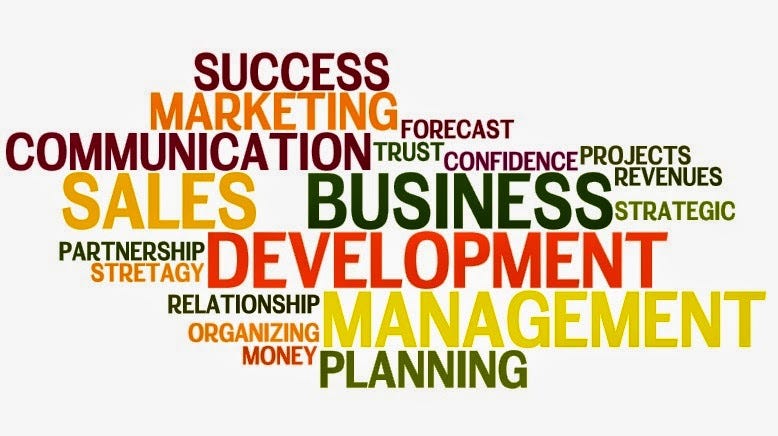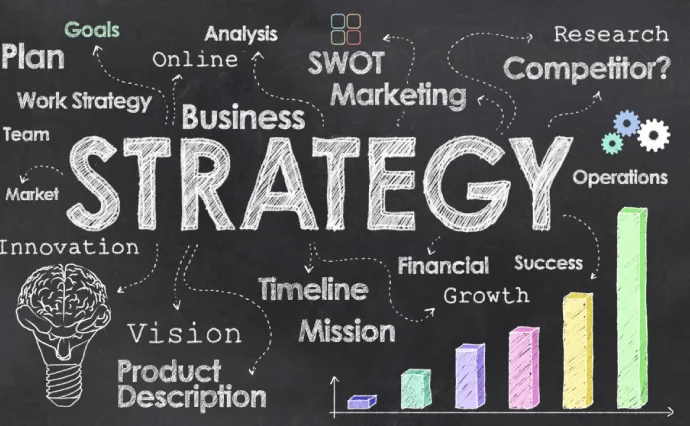Small Business Growth Ideas: Unlocking Opportunities for Growth
Small businesses are the backbone of many economies. However, growth can be challenging for these enterprises. By exploring small business growth ideas, owners can find creative ways to scale their operations and increase profitability. Whether through marketing strategies, product innovation, or better customer engagement, small businesses have numerous opportunities for sustainable growth.
The Importance of Innovation in Small Business Growth
Innovation is key to driving growth in small businesses. By continually updating products or services, small businesses can stay competitive in a fast-evolving marketplace. This small business growth idea is not limited to tech startups; any business can innovate by improving customer service, offering new products, or using technology to streamline operations.
Marketing Strategies for Small Business Growth ideas
One of the most effective small business growth ideas is refining marketing strategies. Specifically, small businesses should embrace digital marketing, including social media and email campaigns. These methods provide cost-effective ways to reach larger audiences and therefore boost sales. In addition, businesses can target local markets through community events and partnerships, which not only enhances visibility but also fosters a sense of connection within the community. Consequently, a well-rounded marketing strategy can significantly contribute to sustainable growth for small businesses.
Expanding Product or Service Offerings
Another popular small business growth idea is to expand product or service offerings. Diversification helps a business tap into new customer segments and increases revenue streams. Before expanding, small business owners should conduct market research to understand customer needs and preferences.
Customer Retention Strategies with Small Business Growth Ideas
While attracting new customers is crucial, retaining existing ones can be more cost, effective. Building strong relationships with customers ensures they keep coming back. A small business growth idea for improving customer retention could be offering loyalty programs, personalized services, and excellent post-purchase support.
Streamlining Operations for Efficiency
Efficiency is crucial in small business growth. By optimizing daily operations, businesses can reduce costs and improve service quality. A helpful small business growth idea is automating repetitive tasks such as inventory management and invoicing. This not only saves time but also reduces human error.
Using Data to Drive and small Business Growth Ideas
Data, driven decision, making is another essential small business growth idea. By analyzing customer behavior, sales trends, and market data, businesses can make informed choices about marketing, product development, and customer service improvements. Even small businesses with limited resources can leverage affordable data tools to gain valuable insights.
Building a Strong Online Presence And Small Business Growth Ideas
In today’s digital age, having an online presence is vital. Small businesses should invest in building user-friendly websites and creating content that appeals to their target audience. An excellent small business growth idea is to utilize SEO (Search Engine Optimization) strategies, ensuring that their websites rank well on search engines.

Networking and Partnerships
Networking and forming partnerships is another powerful small business growth idea. Collaborating with other businesses or influencers can provide new opportunities, whether in the form of joint promotions, cross-marketing, or expanding into new markets. Additionally, attending industry conferences and events helps businesses gain insights and establish valuable contacts.
Financial Management for Small Business Growth
Effective financial management plays a pivotal role in business growth. Monitoring cash flow, managing debts, and planning for future investments are critical aspects. A solid small business growth idea is to consult financial advisors to help plan for long-term growth and avoid financial pitfalls.
Embracing Sustainability Practices
Many customers today prefer businesses that are environmentally conscious. A forward-thinking small business growth idea is to implement sustainability practices such as reducing waste, using eco-friendly packaging, or supporting local suppliers. This can enhance the brand image and attract a loyal customer base that values ethical practices.
Leveraging Technology for Small Business Growth Ideas
In today’s digital world, leveraging technology is a crucial small business growth idea. From cloud computing to customer relationship management (CRM) systems, technology can simplify tasks, enhance customer service, and boost efficiency. Many small businesses use technology to manage finances, inventory, and even marketing campaigns, allowing them to compete with larger companies without needing massive resources.
Utilizing Social Media for Business Growth
Social media is one of the most cost-effective and impactful small business growth ideas. Platforms like Facebook, Instagram, and LinkedIn allow businesses to engage with customers, promote products, and build brand awareness. Regularly posting valuable content and engaging with followers can boost customer loyalty and generate sales. Additionally, businesses can use paid advertising on these platforms to target specific demographics, reaching potential customers who are most likely to engage with their brand.
The Power of Word-of-Mouth Marketing
Word, of, mouth marketing remains one of the most effective small business growth ideas. Encouraging satisfied customers to share their positive experiences can help attract new customers. Offering referral programs or discounts for reviews and recommendations can increase word-of-mouth promotion. It’s essential to provide excellent customer service, as this can lead to free advertising when customers talk about their experiences with others.
Offering Personalized Customer Experiences
Personalization is a key trend in customer service and a powerful small business growth idea. Customers appreciate businesses that recognize their preferences and provide tailored experiences. This can range from personalized emails and product recommendations to customizing services to meet specific customer needs. Personalization helps businesses build long-lasting relationships with customers and differentiate themselves from competitors.
Scaling with E-Commerce: Small Business Growth Ideas
Opening an online store is another valuable small business growth idea. E-commerce platforms like Shopify and Woo Commerce make it easy for businesses to sell products online, reaching customers far beyond their local area. With the rise of online shopping, even small businesses can tap into global markets and generate additional revenue streams. Offering a seamless, easy, to, use online shopping experience is crucial for retaining customers and driving sales growth.
Building Customer Trust Through Transparency
y Transparency and honesty are important for building customer trust, especially for small businesses trying to establish their brand. A simple yet impactful small business growth idea is to communicate openly with customers, especially regarding pricing, product quality, and business practices. By being transparent, businesses can build credibility and encourage customer loyalty.
Employee Development and Training for Business Growth ideas
Investing in employee development is a strategic small business growth idea. Well-trained employees are more efficient and productive, which contributes directly to the growth of the business. Offering training programs, workshops, and opportunities for career advancement can help retain skilled employees and improve the overall performance of the company. As the business grows, a strong, capable team will be essential to its success.
Collaborating with Other Small Businesses growth ideas
Collaboration is a powerful way to drive growth. Partnering with other small businesses can provide access to new markets, customers, and resources. A creative small business growth idea is to collaborate on marketing campaigns or joint ventures. For example, a local bakery could partner with a coffee shop to offer promotions, combining their customer bases for mutual benefit.
Measuring Growth Through Key Performance Indicators (KPIs)
To ensure success, small businesses should track their progress through Key Performance Indicators (KPIs). These KPIs might include sales revenue, customer acquisition costs, profit margins, and customer retention rates. By measuring and analyzing these metrics, businesses can gain valuable insights; therefore, it becomes a valuable small business growth idea for staying on track and identifying areas of improvement. Furthermore, regularly reviewing KPIs allows businesses to make informed decisions and adjust strategies as needed, ultimately enhancing their chances for sustained growth..
Adaptability and Flexibility in small Business Growth ideas
Finally, adaptability is crucial for small business growth ideas. Market trends, customer preferences, and technologies change rapidly; thus, being flexible is essential. A smart small business growth idea is to stay open to change. Moreover, businesses that can quickly adapt to new conditions, whether it’s adjusting their marketing strategy or offering new products, are more likely to thrive in the long run. In addition, this willingness to embrace change not only helps businesses stay relevant but also positions them to seize new opportunities as they arise.
Investing in Customer Loyalty Programs Of Small Business Growth Ideas
One of the most effective small business growth ideas is creating customer loyalty programs. These programs reward repeat customers with discounts, exclusive deals, or special offers, thereby encouraging them to continue doing business with you. Additionally, a loyalty program builds a sense of belonging among customers, making them feel valued. As a result, loyal customers not only return more often but also promote your business to others through word, of, mouth recommendations, further driving growth.
Expanding Your Product or Service Offerings
Another powerful small business growth idea is expanding your product or service range to meet customer needs. By consistently evaluating market trends and actively seeking customer feedback, businesses can identify gaps in their current offerings and therefore explore new opportunities. Furthermore, introducing new products or services can attract a broader audience and consequently increase revenue streams. In addition, diversification helps protect against market shifts, ultimately ensuring long-term growth and stability for the business.
FAQs
Q: What are the best marketing strategies for small businesses?
Digital marketing, including social media and email marketing, is cost-effective and can reach large audiences. Local events and partnerships also offer excellent opportunities for growth.
Q: How can small businesses retain customers?
Providing excellent customer service, offering loyalty programs, and staying connected through personalized communication can improve retention rates.
Q: How important is innovation for small business growth?
Innovation helps businesses remain competitive by offering new products or improving services. It is crucial for adapting to changing market demands.
Q: What role does financial management play in business growth?
Proper financial planning helps businesses invest wisely, avoid debt, and plan for long-term growth. It ensures that a business remains profitable while expanding.
Q: Can sustainability practices impact small business growth?
Yes, sustainability can attract eco-conscious customers and enhance brand loyalty. It can also reduce costs in the long run through energy savings and waste reduction.
Q: How can a small business leverage data for small business growth ideas?
By analyzing customer behavior and sales trends, businesses can make informed decisions about marketing, product offerings, and customer service improvements.
Q: What are the benefits of expanding product or service offerings?
Expanding offerings allows businesses to tap into new customer segments, diversify revenue streams, and stay competitive in their industry.
Q: How can technology help small businesses growth ideas?
Technology streamlines operations, enhances customer service, and increases efficiency. Tools like CRM systems, e-commerce platforms, and social media marketing can drive growth and expand a business’s reach.
Q: What are some cost-effective ways to market a small business growth ideas?
Social media marketing, word-of-mouth promotion, and email marketing are cost-effective ways to engage with customers and grow your business. Participating in local events or forming partnerships with other businesses also boosts visibility.
conclusion
implementing small business growth ideas like leveraging technology, offering personalized customer experiences, and focusing on customer service can significantly boost a company’s success. These strategies not only help attract new customers but also foster long-term relationships, which are vital for sustainable growth. Moreover, using tools like e-commerce platforms and tracking key performance indicators (KPIs) ensures that businesses stay competitive in today’s ever-changing market.
Furthermore, growth requires adaptability and collaboration. By staying flexible and open to new opportunities, small businesses can continuously improve and find new avenues for expansion. Additionally, partnering with other businesses and investing in employee development can create a solid foundation for future success. Ultimately, with the right combination of innovation, customer care, and strategic planning, small businesses can thrive in both local and global markets.


